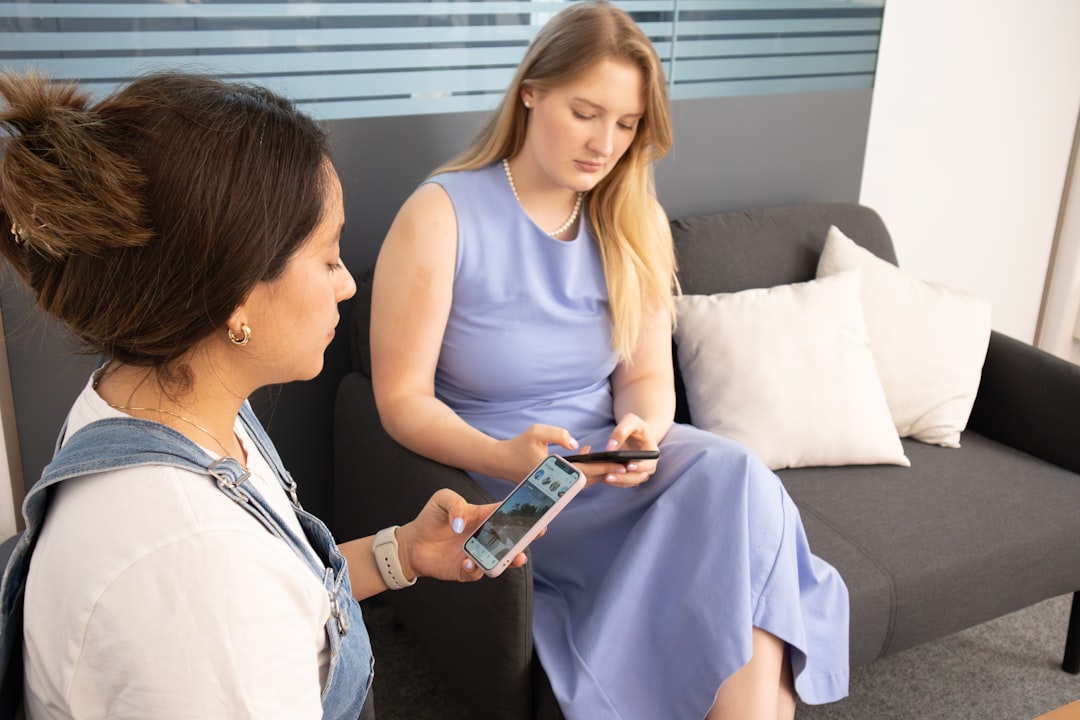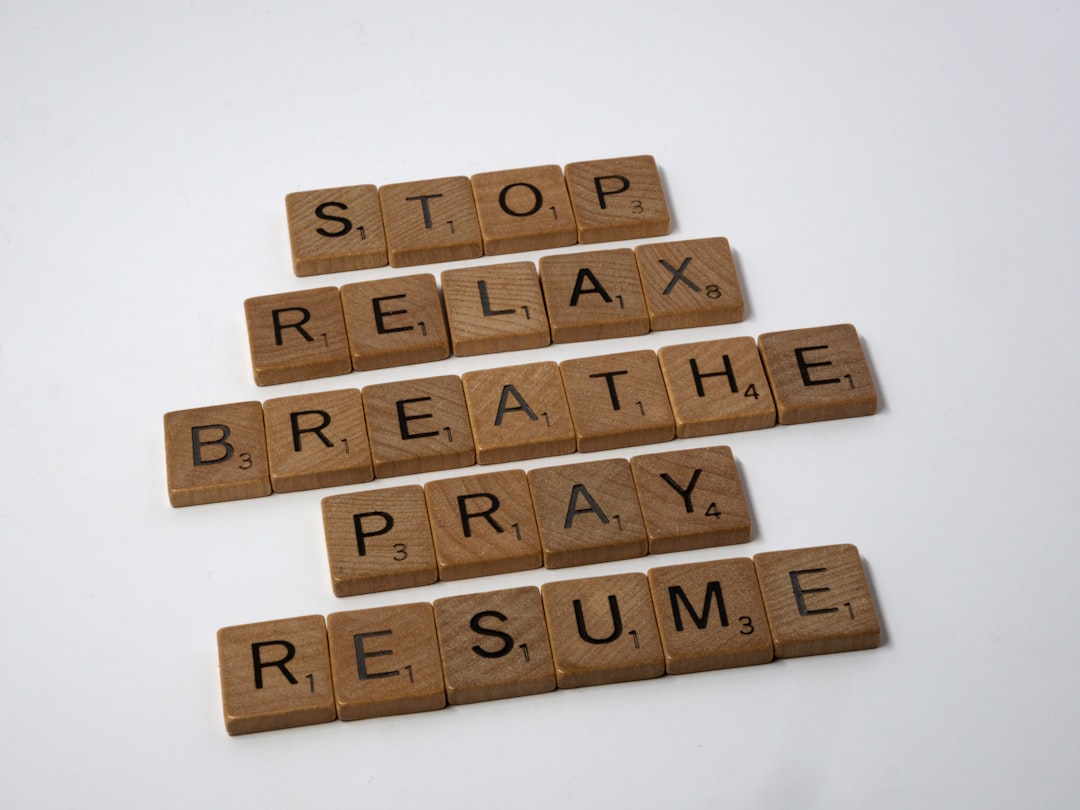

Engage prospects with a scan and streamline customer engagement with FREE QR code marketing tools by Sona – no strings attached!
Create a Free QR CodeFree consultation

No commitment

Engage prospects with a scan and streamline customer engagement with FREE QR code marketing tools by Sona – no strings attached!
Create a Free QR CodeFree consultation

No commitment
Career counseling services face significant challenges bridging the gap between in-person client interest and measurable online engagement. Many individuals interested in guidance never make it through outdated sign-up sheets or respond to manual follow-up, causing high-value prospects to slip through the cracks before they are ever tracked in a CRM. This leads to lost opportunities as digital-first platforms increasingly shape client expectations for immediacy, personalization, and ease of use.
Many organizations lack visibility into who is engaging with their offline materials, whether at job fairs, workshops, or on-campus events. Promising leads may remain anonymous and ultimately unpursued, as modern client journeys now span both the physical and digital, putting pressure on counseling services to adopt strategies that bring demand to light and create seamless pathways from discovery to action. For campus teams, see Sona QR’s industry guidance for education.
QR codes are transforming this landscape by removing friction between offline and online interactions. With QR-enabled materials, career counseling centers can instantly detect interest, capture engagement signals in real time, and tailor follow-up at scale, ensuring they reach not just any audience, but the decision-makers and job seekers ready to take the next step. This guide offers proven tactics to customize QR campaigns for career counseling use, driving higher job placement conversions and more impactful coaching journeys.

In career counseling, neglected follow-up with interested prospects is a common issue. High-potential clients often drop out due to manual processes like paper surveys or handwritten interest cards, resulting in incomplete data and lost leads. By using QR codes at every key interaction point, counseling organizations can connect analog touchpoints, such as career fair discussions or printed marketing, with digitally tracked journeys. This preserves the details of each interaction and surfaces valuable, previously anonymous prospects directly into CRM or marketing systems for targeted engagement.
QR codes bridge the gap between physical touchpoints and digital outcomes. When a student scans a code on a workshop flyer to join a session, or a mid-career professional scans a direct mail piece to schedule a consultation, the scan acts as both an intent signal and a gateway to conversion. Done correctly, QR-enabled interactions reduce friction, shorten time-to-booking, and provide the analytics needed to continuously improve performance.
Used in this way, QR codes ensure no high-value prospect is lost and every expression of interest is made actionable. As a result, outreach teams spend less time manually re-entering data and more time coaching clients toward outcomes.

Many career counseling organizations struggle to identify which prospects are engaged or ready to move forward, mainly due to limited visibility into who interacts with their physical materials. Flyers, brochures, and appointment cards sit on desks or get misplaced, which decouples curiosity from action. QR codes close these gaps by converting static materials into interactive touchpoints that record interest, guide next steps, and produce data for smarter follow-up.
QR codes also meet modern expectations for speed and simplicity. Prospects do not want to type long URLs or call to schedule during office hours. With one scan, they can book a session, download a resource kit, or subscribe to job alerts. Dynamic codes add flexibility because they let you change destinations as programs update, and they deliver the analytics your team needs to allocate time and budget where it matters.
QR codes ultimately empower career counseling leaders to ensure all interest is tracked and every engagement opportunity is fully utilized. The result is a more connected client journey from awareness to coaching to placement.

Lost opportunities occur when client intent is not captured, like when prospects take printed materials but never follow up. QR codes change this by turning every touchpoint into a measurable outcome. Different formats serve specific needs, from direct booking to contact saving, and selecting the right type lets you align the scan experience with the user’s context.
For career counseling teams, web link and form-based destinations carry most of the conversion load, with vCards and messaging initiators supporting high-touch interactions. Dynamic codes are the default choice for campaigns that require measurement, personalization, and iterative improvements.
Dynamic codes let teams track interactions, update content, and link offline engagement to ongoing nurturing. Static codes are useful for evergreen resources such as a permanent program overview PDF. Most campaign-driven contexts benefit from dynamic codes managed in a platform like Sona QR.

Growth in career counseling is often limited by inconsistent engagement and lack of follow-through. The best opportunities sit at inflection points where curiosity peaks but conversion stalls. Look for places where students, alumni, or community members encounter your materials, pause to consider a next step, and need a quick path to action.
Mapping these micro-moments helps you deploy QR codes with purpose. Start by identifying top-of-funnel awareness points, mid-funnel consideration moments, and bottom-of-funnel conversion prompts. Then align a clear CTA with each placement to move the audience forward in one scan.
Focusing on these moments ensures that your offline presence directly fuels a digital journey you can track, optimize, and attribute to real outcomes like bookings and placements.

QR codes bring industry best practices to life through specific, repeatable workflows. Each use case pairs a clear trigger with a measurable outcome, so teams can prove value and iterate rapidly. Start with high-volume interactions and expand to specialized audiences like veterans, career changers, and international students.
The following examples reflect common patterns across counseling centers, workforce development programs, and university career services. They are easy to launch, simple to measure, and capable of scaling across multiple programs or campuses.
You can extend these use cases with employer-focused workflows, such as QR-enabled job posting submissions or campus recruiting check-ins. Each additional code builds a more complete picture of engagement across your ecosystem.
Each scan is a data point that reveals intent, context, and timing. By deploying multiple QR codes across touchpoints, counseling teams can segment audiences automatically and tailor follow-up messages that match their stage of readiness. This approach respects individual needs while increasing the relevance of every outreach.
To maximize value, align scans with funnel stages and program types. For example, treat first-time workshop registrants differently from alumni seeking executive coaching, and distinguish between employer partners and job seekers. Use Sona QR to tag codes, sync data to your CRM, and trigger stage-specific sequences.
With Sona QR, each code becomes a smart entry point that converts real-world interactions into audience intelligence. Over time, you will see clearer patterns in what each segment needs to move forward.
Disconnected outreach leads to inconsistent messaging and wasted spend. QR codes provide the connective tissue that unifies your print, event, and digital channels. When every material carries a scannable path into your funnel, you can deliver consistent experiences and track which channels drive action.
This integration also unlocks real-time optimization. If you notice that poster scans convert to bookings at a higher rate than email clicks, you can shift resources quickly. Likewise, segment-level performance helps you adjust content for student populations, alumni, or community members.
When these elements work together, QR codes serve as the offline onramp to your digital marketing engine. A centralized platform like Sona QR lets you manage codes, monitor performance, and sync scan data with your CRM and ad platforms.
A structured rollout ensures your QR campaign aligns with measurable goals, supports your counseling workflows, and sets a foundation you can scale. Use the following steps to design, deploy, and optimize a program that turns scans into bookings and outcomes.
The checklist blends strategy with practical execution. Each step includes guidance tailored to career counseling environments like campuses, workforce boards, and nonprofit training centers.
Start by defining what problem you want to solve. For example, you might aim to reduce drop-off after a career fair conversation, increase assessment completion, or streamline employer RSVPs for an upcoming info session. Pick one outcome and one audience to keep scope manageable.
Translate that outcome into a clear scan action. If your goal is more one-on-one consultations, your QR should route to an online scheduler and display a friendly CTA like Scan to meet your counselor. If your goal is employer engagement, route to a partner intake form with fields relevant to hiring needs.
Select the code type that provides sufficient flexibility and measurement. Static codes work for unchanging destinations like a program overview PDF. Dynamic codes should be the default for campaigns, since they allow edits, analytics, and personalization.
If you anticipate running multiple variants or A/B tests, choose dynamic codes managed through Sona QR. You will be able to update destinations, add UTM parameters, and tag scans without reprinting.
Design each code for the environment in which it will be scanned. Consider distance, lighting, and audience flow. Use brand colors and a logo embed to improve trust, add a clear frame, and include microcopy that states the benefit of scanning.
Before deployment, test across multiple devices and scenarios. Scan from the expected distance, confirm fast load times, and ensure the landing page is mobile-first. If the environment has glare or low light, adjust colors and sizing.
Start with high-traffic, high-intent touchpoints. Career fair banners, classroom door posters, and alumni mailers offer prime visibility and capture moments of curiosity. Ensure codes are placed at eye level, not below tables or on cluttered walls.
Roll out to additional channels once you have baseline performance. For example, add QR codes to counselor business cards, lobby screens, and workshop slides. Maintain consistent CTAs so audiences learn what to expect from scans.
Use Sona QR to track scans by time, location, device, and source placement. Review conversion funnels to identify drop-offs between scan and completion. If mobile forms lose people at a specific field, simplify it. If bookings lag on weekends, test messaging or adjust availability.
Run A/B tests on CTAs, landing page copy, and incentives like early access to internship postings. Feed insights back to staff so they can reinforce scanning behavior in conversations and group sessions.
Leaders often struggle to quantify which campaigns drive client acquisition, partly due to manual tracking and fragmented systems. QR codes automate data collection, connect scans to downstream actions, and reveal which channels and assets influence outcomes like bookings, assessments, and placements. When tied to a CRM, these signals support better forecasting and resource allocation.
Tracking starts at the scan but should not end there. The goal is to follow the journey from scan to form completion to booking to attendance to job placement. This requires joining data across systems and mapping touchpoints to conversions, which platforms like Sona QR and Sona.com make attainable with out-of-the-box integrations. See multi-touch attribution.
Sona QR captures real-world engagement and syncs it to your marketing stack. Sona.com provides identity resolution and multi-touch attribution so you can connect anonymous scans to known profiles and evaluate how QR engagement contributes to pipeline, enrollments, and revenue from employer partnerships.
Scaling QR success requires consistent execution, thoughtful messaging, and staff enablement. The best programs treat QR codes as part of the service experience, not just a marketing add-on. Align codes with moments when clients want help, and make the value of scanning obvious.
Prioritize a handful of tips that match your most common media and workflows. For campus-based teams, that often means posters, workshop slides, and direct mail to alumni. For workforce agencies, it may be community boards, partner sites, and lobby displays.
Creative deployment examples include printing a QR code on counselor door signs for walk-in slots and placing codes on resume review feedback sheets that link to a revision guide. Small touches like these normalize scanning and keep the journey moving.
Career counseling organizations have struggled to surface client engagement and connect campaign data, limiting conversion and service quality. Embedding QR codes in print and digital experiences bridges traditional gaps, connecting interest to resources and appointments while capturing previously invisible signals. This foundation enables ongoing personalization, timely retargeting, and better client experiences from first contact to job placement.
Leveraging QR codes empowers career counseling services to transform pain points like untracked prospects, anonymous drop-off, or fragmented campaigns into measurable, actionable opportunities for engagement and conversion. By closing the gap between printed resources and digital workflows, counseling providers can enhance service delivery, improve follow-up rates, and personalize the client journey at scale. Organizations that embrace an offline-to-online integration mindset position themselves to achieve higher quality leads, increased retention, and a lasting impact on every individual they serve.
With Sona QR, you have everything needed to capture demand at the source and convert it into measurable results. Start creating QR codes for free, connect them to booking pages or assessments, and track the journey from scan to outcome. As scan data flows into your CRM and marketing tools, you will gain clarity about what moves people forward, and you can invest with confidence in the channels and messages that deliver career success.
QR codes have revolutionized career counseling services by transforming traditional client interactions into dynamic, measurable engagement opportunities. Whether it’s streamlining client acquisition, enhancing personalized guidance, or providing seamless access to valuable resources, QR codes empower counselors to connect with candidates in real time and gather actionable insights that drive better career outcomes.
Imagine instantly knowing which brochures, workshops, or online tools resonate most with your clients—and being able to update those resources on the fly without reprinting. With Sona QR, you can create dynamic, trackable QR codes that link every scan to meaningful data, helping you optimize your services and convert engagement into successful career placements. No more guesswork—just smarter, data-driven counseling.
Start for free with Sona QR today and turn every scan into a meaningful connection, a confident career decision, or a long-term success story.
Career counseling services help individuals by providing personalized guidance, improving follow-up rates, increasing job placement conversions, and enabling a connected client journey from awareness to coaching to placement.
Career counseling supports career development by offering assessments, personalized coaching, access to job alerts, and streamlined scheduling for consultations, all facilitated through seamless offline-to-online integration.
Reputable career counseling services can be found at campus career centers, workforce development programs, nonprofit training centers, and organizations that use modern digital tools like QR codes to track and engage clients.
Career counseling centers typically offer workshop registrations, career assessments, personalized coaching sessions, job placement support, employer event RSVPs, and access to resource hubs and success story libraries.
QR codes in career counseling connect physical materials to digital actions by capturing engagement in real time, enabling instant bookings, delivering resources, tracking interest, and syncing data to CRM systems for targeted follow-up.
Use Sona QR's trackable codes to improve customer acquisition and engagement today.
Create Your FREE Trackable QR Code in SecondsJoin results-focused teams combining Sona Platform automation with advanced Google Ads strategies to scale lead generation

Connect your existing CRM

Free Account Enrichment

No setup fees
No commitment required

Free consultation

Get a custom Google Ads roadmap for your business






Launch campaigns that generate qualified leads in 30 days or less.
